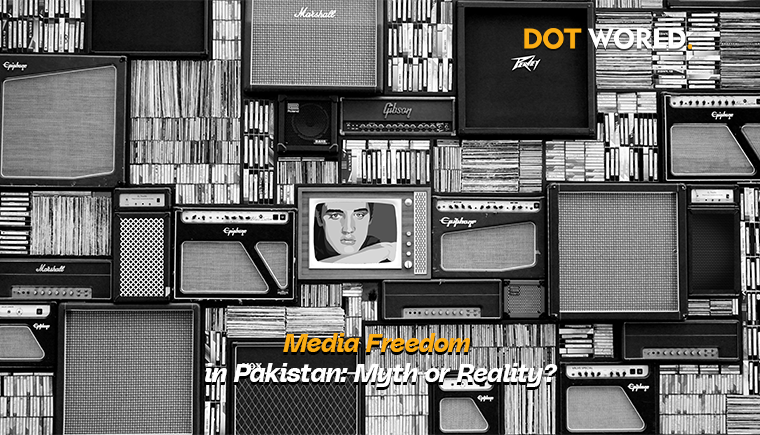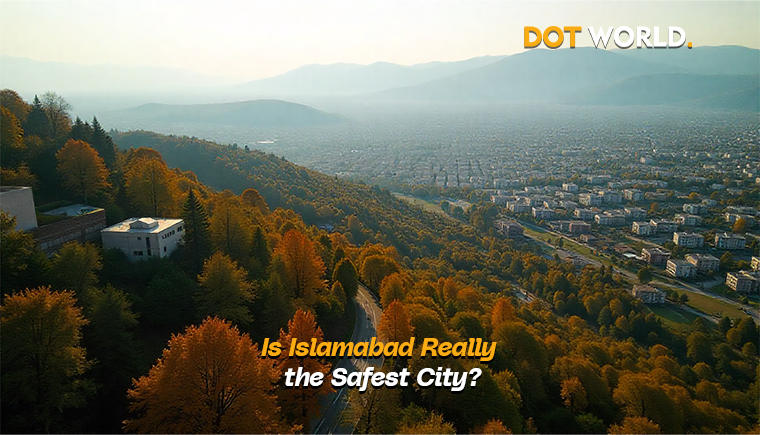In every democratic society, the media is referred to as the “fourth pillar.” It informs the public, holds power to account, and enables national dialogue. But in the case of Pakistan media, the story is far from simple. While we have hundreds of news channels, newspapers, and online outlets, the real question is: do they have the freedom of press to tell the truth?
From silent anchors to missing journalists, from blackout of political rallies to editorial self-censorship, the reality of journalism in Pakistan today raises uncomfortable questions. Is censorship in Pakistan increasing? Or is the narrative of a controlled press exaggerated?
In this blog, we’ll unpack the history, challenges, and current state of Pakistan media freedom. We’ll explore whether we’re dealing with a myth of liberty — or an uncomfortable reality of suppression.
🕰️ A Brief History of Media in Pakistan
Since its inception in 1947, Pakistan media has had a turbulent relationship with the state. During military regimes, the press faced direct crackdowns, while democratic governments also found subtle ways to control the narrative.
- Ayub Khan’s era (1958–69): Press and Publications Ordinance (PPO) was introduced, restricting media content.
- Zia-ul-Haq’s dictatorship (1977–88): Marked the darkest days of censorship, with severe consequences for dissenting voices.
- Musharraf’s time (1999–2008): Liberalization of electronic media, but also selective bans on channels like Geo TV.
Ironically, the rise of private media post-2002 gave new life to journalism in Pakistan, but it also came with strings attached.
📡 Today’s Pakistan Media Landscape
On the surface, Pakistan media appears diverse and vibrant:
- Over 80 news TV channels
- Hundreds of newspapers and magazines
- A growing network of YouTube, podcasts, and digital journalism
However, scratch beneath the surface, and a different story emerges — one riddled with censorship, intimidation, and manipulation.
🚫 The Many Faces of Censorship
Censorship in Pakistan media doesn’t always come in the form of black-and-white bans. It’s often more subtle, more psychological — and more effective.
🔇 1. Editorial Pressure
Journalists and editors are often “advised” to avoid sensitive topics like:
- Civil-military relations
- Human rights violations
- Missing persons
- Criticism of judiciary or military
- Coverage of opposition leaders
One wrong word can lead to shows being pulled, anchors being fired, or entire channels being taken off-air.
🔍 2. Regulatory Control
Authorities like PEMRA (Pakistan Electronic Media Regulatory Authority) are used not just to maintain standards, but to enforce narrative discipline.
Channels are fined or suspended over vaguely defined “anti-state content” — a term so broad it can mean anything from reporting on protests to airing a political speech.
🧠 3. Self-Censorship
Due to fear of consequences, many media houses and journalists now engage in self-censorship. They don’t need to be told what not to say — they’ve already learned to stay quiet.
🧑💼 Journalism in Pakistan: A Dangerous Profession
For those in journalism in Pakistan, speaking truth to power comes at a heavy cost:
- Physical threats: Many journalists have been beaten, abducted, or mysteriously disappeared.
- Online harassment: Especially targeting women journalists through coordinated trolling and abuse.
- Job insecurity: Reporters who speak out may lose their jobs or face blacklisting.
- Legal cases: Charges like “cybercrime” or “anti-state activities” are often filed against dissenting journalists.
According to Reporters Without Borders, Pakistan ranks 150+ in the World Press Freedom Index — a stark indicator of the current situation.
📱 Digital Media: A New Hope or a New Threat?
The rise of social media, YouTube journalism, and independent podcasts offered a new platform for alternative voices. But even these are now under watch.
- YouTubers have been arrested for political commentary.
- TikTok has been banned multiple times citing “immoral content.”
- Internet shutdowns during protests have become common.
- The proposed E-Safety Bill raises serious concerns over control of digital content.
As traditional media shrinks under pressure, digital media was the new hope — but censorship is rapidly catching up here too.
🏛️ Political Polarization & Media Bias
Another major issue with Pakistan media today is the increasing political polarization. Channels are labeled as “pro-govt” or “anti-govt”, and neutrality is hard to find.
This has eroded public trust in media institutions, as every news item is viewed through a lens of bias. In such a climate, real freedom of press becomes harder to define.
When anchors turn into party spokespersons and news becomes noise, journalism in Pakistan suffers — not just from censorship, but from within.
📣 Civil Society and Public Response
Despite these challenges, civil society and rights groups continue to raise their voice:
- Campaigns like #FreeThePress and #JournalismIsNotACrime
- Organizations like PFUJ (Pakistan Federal Union of Journalists) and HRCP (Human Rights Commission of Pakistan)
- Independent online platforms offering fact-based reporting
But activism alone is not enough without institutional and public support.
⚖️ Legal Safeguards: Do They Exist?
Pakistan’s Constitution Article 19 guarantees the freedom of press, but adds a caveat — “subject to reasonable restrictions” in the interest of Islam, national security, or public order.
This vague phrasing is often used to justify censorship, making legal protection for journalists weak and inconsistent.
The recent push for stricter defamation and cyber laws further threatens digital freedom.
🌍 Comparing With Other Countries
While many nations struggle with press freedom, Pakistan’s situation is worse compared to other developing democracies:
| Country | Press Freedom Rank (2024) | Trend |
| India | 159 | Declining |
| Pakistan | 152 | Declining |
| Bangladesh | 163 | Declining |
| Sri Lanka | 135 | Improving |
Even in a regional context, Pakistan media is increasingly under pressure.
✅ Is There Still Hope?
Yes — but only if:
- Media owners prioritize ethical journalism over political favours
- Regulatory authorities are reformed with transparency
- Civil society and public continue to defend press freedom
- The judiciary ensures protection for journalists
- Government stops using laws as tools of suppression
Above all, freedom of press must be seen not as a threat, but as a national asset — critical for democracy, governance, and social development.
🔗 Relevant Hyperlinks for Exploration
Here are links from your site that fit naturally into the discussion:
- Watch Powerful Videos on Pakistan’s Education & Politics
- Blogs on Education, Politics & Social Issues in Pakistan
- About MyDotWorld – Our Mission for a Better Pakistan
- Contact MyDotWorld – Let’s Connect and Collaborate
📌 Final Thoughts
So, is media freedom in Pakistan a myth or a reality?
Unfortunately, for now, it remains more of a myth. While platforms exist, the real freedom of press — the ability to report truth without fear — is still elusive. The Pakistan media industry must navigate a minefield of censorship, intimidation, and bias every single day.
But if there’s one thing history has shown us, it’s this: truth finds a way. The courage of journalists, the resilience of audiences, and the power of digital platforms can still turn the tide.
Until then, silence is not an option. Not for journalists. Not for citizens. Not for democracy.





